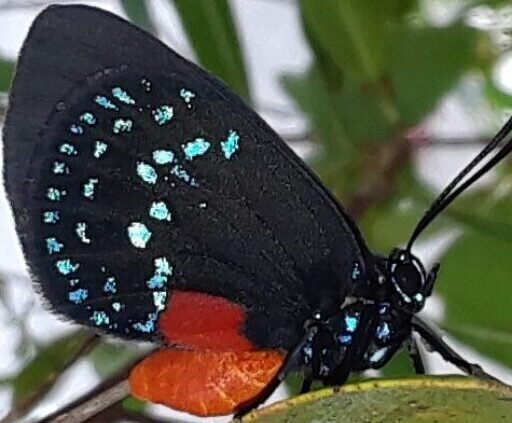Why is important for you to plant a butterfly garden?
¿Por qué es importante para ti crear un jardín para mariposas?
English
Being outside enjoying butterflies flutter around creates feelings of well-being and peace. Nature is awesome!
That these beautiful butterflies can make us happy and improve our mental health, is one of many good reasons to make our gardens butterfly friendly. Butterflies are indicators of a healthy environment, they are also pollinators contributing to the genetic variation of plants. Additionally, butterflies are food for several animals in the ecosystem.
Español
Estar en tu jardín y ver las mariposas revolotear a tu alrrededor, te dará una sensación de sosiego y paz.
Estas bellas creaturas contribuyen a la salud mental, haciéndote sentir feliz, esta es sólo una de las muchas excusas que puedes encontrar para hacer de tú jardín un lugar para relajarse. Las mariposas son indicadores de un ambiente saludable, polinizadores que contribuyen a la variación genética de las plantas. Adicionalmente, las mariposas contribuyen con un ecosistema balanceado en general.

What to do?
1.Plant Host Plants: The Coontie (Zamia floridana), the only native cycad in North America. Once established this plant is very easy to take care of. Plant Coontie in well-draining soils, and don’t worry about the light conditions, because they can grow in deep shade to full sun. Coontie is also drought-resistant, making them a great choice for low-maintenance gardens in both coastal and inland areas. Atala butterflies will lay eggs all year around-especially during the Spring- and you can appreciate the entire life cycle unfold in your garden. To learn more about the Coontie visit: https://edis.ifas.ufl.edu/publication/MG347
¿Qué hacer?
Siembra plantas huésped: La Coontie (Zamia floridana), la única cícada nativa en América del Norte, una vez establecida esta planta es muy fácil de cuidar. Plantélos en suelos bien drenados y no se preocupe por las condiciones de luz, debido a que pueden crecer en sombra o a pleno sol. También es resistente a la sequía, por lo que es una gran opción para jardines de bajo mantenimiento en las zonas costeras e interiores. Las Atalas depositarán sus huevos allí durante todo el año, especialmente en la primavera, Podrás apreciar todo el ciclo de vida que se desarrolla en tú jardín. Para saber más sobre coontie visita:https://edis.ifas.ufl.edu/publication/MG347

2.Plant flowers AKA nectar source plants: Atalas prefer white flowers with short corollas, such as Buttonwood, Fiddlewood, Sumac (Rhus copallina), Cabbage Palm (Sabal palmetto,White Crownbeard (Verbesina virginica), Butterfly Bush (Buddleja lindleyana),Black Olive (Bucida buceras),Chaya (Cnidoscolus chayamense),Wild Coffee (Psychotria nervosa), Lantana ( Lantana Involucrata),Bluemink (A. houstonianum Mill), Florida Powder Puff (Dombeya spp. L). More nectar source information can be found at: atalanectarsources_skoi.pdf (browardbutterflies.org)
2. Planta flores( plantas de origen de néctar): Las Atalas prefieren flores cortas de corolas blancas, por lo que puedes elegir entre muchas como el árbol de Fiddlewood, Sumac (Rhus copallina), la palma de repollo (sabal palmetto, barba de corona blanca) Arbusto mariposa (Buddleja lindleyana), aceituna negra (Bucida buceras), chaya (Cnidoscolus chayamense), café silvestre (Psychotria nervosa), Lantana (Lantana Involucrata), bluemink (A. houstonianum Mill), florida powder puff (Dombeya spp. L). Para más fuentes de néctar para la visita atalanectarsources_skoi.pdf (browardbutterflies.org)

3.Stop using Pesticides: Did you know that insecticides kill our beautiful butterflies and bees? We can keep mosquitoes away without harming pollinators. Keep track of, and empty containers that can hold water and mosquito larvae. Grow native plants. Wildlife gardens tend to have fewer mosquito problems. Use a fan when sitting outdoors. More strategies for protecting yourself and your family- while saving beneficial insects are here: When Pest Comes to Shove (nwf.org)http://Protecting Bees and Other Pollinators from Pesticides | US EPA
3. Deja de de usar Pesticides: ¿Sabías que los insectísidas matan a nuestras hermosas mariposas y abejas? Puede mantener alejados a los mosquitos sin dañar a los polinizadores. Manten un seguimiento y las áreas vacías que pueden contener agua donde los mosquitos ponen huevos, plantar plantas nativas- los jardineros de vida silvestre tienden a tener menos problemas con los mosquitos. Usa un ventilador cuando te sientes al aire libre. Para obtener más estrategias para protegerse a sí mismo y a tú familia, mientras salva insectos beneficiosos, vaya a When Pest Comes to Shove (nwf.org)http://Protecting Bees and Other Pollinators from Pesticides | US EPA

4.Create a wildlife garden and have it certified. Go further, it is very simple, visit Broward Naturescape and learn how
4. Crea un jardín de vida silvestre y tenerlo certificado. Ir más allá, es muy sencillo, visita Broward Naturescape y aprende cómo
- 5.Brag to your neighbors and friends about your wonderful garden!
5. Alardea con tus vecinos y amigos acerca de su precioso jardín jardín!
